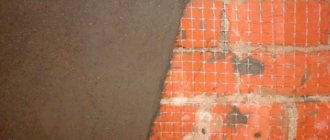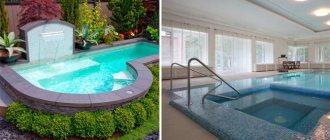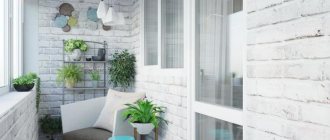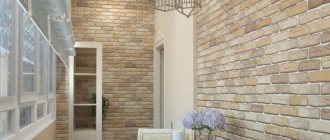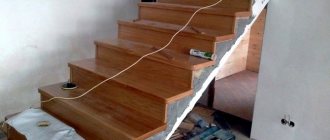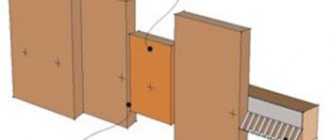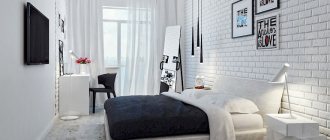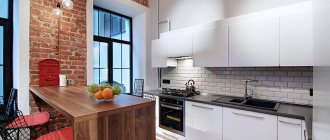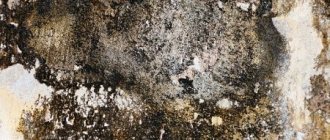What walls are suitable
Walls made of white and red brick are suitable for a loft; there is not much difference here. The only thing you need to pay attention to is the condition of the masonry.
Important ! If, when cleaning the surface, shedding and destruction of bricks were revealed, the best option would be to plaster the surface and seal all defects. This work also includes the replacement of individual masonry elements with the help of restorers.
Naturally, in this case we cannot talk about any “natural” loft. Therefore, imitation masonry, decorative stone and other methods of wall decoration are used here.
Imitation of masonry using photo wallpaper Source design-homes.ru
Wiring
Sockets and switches are installed both hidden and surface-mounted, I think there will be no problems with this.
How to treat a brick wall in a loft interior
There are several options for covering a brick wall for this industrial style:
- facade or interior paint, water-based or oil-based.
- stain.
- primer.
- varnish
In some cases, several of the above methods are combined to obtain a protected coating for bricks. For example, the surface is first primed and then varnished.
Painting a brick wall to look like a loft
The most popular way to give the interior the charm of an industrial style, and at the same time soften the texture of the brick, is to paint the masonry.
Latest trends on how to treat a brick wall as a loft:
- Carelessly painted walls white.
The main thing is that no special effort is required here; you can apply the emulsion as you please. The beauty is that tonal transitions are created from translucent shades, through which the brick is visible, to a dense snow-white layer. The effect of old crumbling whitewash looks especially beautiful against the background of white walls.
Whitewashing in loft style Source yandex.net
To create it, you need to dilute the paint in a 1:3 ratio with water and apply it to the surface with horizontal strokes. After absorption, you will need a few more layers in some places to get what you need. To make an uneven and dense surface, you can also use a variety of spatulas.
Designer advice! When painting, focus on small areas, adding white little by little. Also, always start work from an inconspicuous area, and not from the center, so that if something happens, you can correct any defects.
- Densely painted in a snow-white shade.
This finishing option is for those people who would like to preserve the brick texture, and at the same time give the interior a more “smooth”, glamorous look. The advantage of this method is that the white space is combined with cornices, ceilings, and partitions of the same color. This results in a more classic interior.
White loft in the living room Source bucwar.ru
To make such walls, you will need to apply paint in several layers, achieving uniform coloring.
Important ! Brick is a porous material, so any coloring compounds penetrate inside and are absorbed. This will require many layers before the result is satisfactory.
- Gray or black walls.
A deep shade of gray looks most beautiful in a loft interior. The combination of metallic details and gloss makes this surface an ideal backdrop.
A good effect can be created if you first apply a layer with the main tone, and after drying, add gloss to it using silver glaze.
- Red brick walls.
For the main coating, choose a reddish-brown or orange shade, for the seams - white or black.
On a note ! The walls should be painted with a wide brush from 6 to 10 cm wide; in this case, a roller will leave untouched areas.
Many designers believe that painting a wall should only be done with neutral colors. Therefore, if there is a risk of spoiling the interior, it is better to leave the masonry in a natural shade or give it a stained look.
The red brick wall serves as an excellent accent in the interior. Source tildacdn.com
See also: Catalog of companies that specialize in finishing materials and related work
Loft style stain
If the color of the brickwork is too light and the apartment owner does not like it, use stain. Cover it in the same way as paint over the entire surface of the wall.
The advantage of this method is a darker, more saturated color of the brick, and preservation of the full structure of the masonry. When painting, you get a stunning “stained” wall effect.
Varnishing
This finishing option is used to protect the brick coating from dirt and preserve the original color and structure of the material.
Before applying the varnish coating, the surface must be cleaned of dust. And then carry out the work using a small long-haired roller or brush. Several layers will need to be applied. Before the surface is completely ready.
Advice ! Use only matte varnish in the loft. Designers believe that gloss spoils the brick finish and destroys the natural appearance.
Primer
As the main protective coating and final finishing, a deep penetration primer or paint diluted with water in a ratio of 1:3 or 1:5 is used.
This finishing option is suitable if the owner would like to maintain a completely natural appearance of the masonry.
Coating a brick wall with a primer Source baueco.ru
A special primer penetrates to a depth of 5 mm and adheres all elements to each other, which makes the surface stronger.
Using paint
Brickwork can be painted. The paint on it will retain its attractive appearance for 4-6 years. Afterwards the color will have to be updated. In this case, paint is used for interior work.
Mostly walls are painted:
- oil;
- acrylic paint.
In the first case, the wall looks brighter and more attractive; in the second, the paint can be easily washed off if you don’t like something. You can also use special paints for brick walls. They are absorbed deep into the surface.
Important! In the kitchen and bathroom, walls should be coated with moisture-resistant paints.
To properly paint brickwork, there are several things to consider:
- Brick walls can be painted a year after installation.
- Coloring is done horizontally. Use brushes because they can be used to paint over all the unevenness.
- The wall should be repainted after 5 years.
To save on paint, the wall is pre-coated with an acrylic-based penetrating primer.
Preparing the wall
Before painting the walls, you need to clean the surface of old plaster, dirt and dust, salt deposits and mold.
After treatment with the drug, you need to carefully prime the masonry several times. Then cover everything with paint and finish with varnish, ensuring each layer dries well.
Efflorescence stains
Such unpleasant phenomena arise from the composition of the water used to dilute the clay. Sulfates lead to the formation of white spots on the masonry, and they can only be removed with the help of professional facade cleaners, for example, Antisolex and other analogues.
Video description
Learn how to get rid of efflorescence on brickwork by watching this video:
Joining seams
To create a loft wall, the brick needs to be half cleared. Here they use a special tool for jointing - a chisel. This procedure is best done in pairs: one person will measure the seams with a building level, and the second will make passes.
You can use both electric tools like a grinder and a hammer drill, and mechanical ones like a chisel and a hammer.
Important! In order not to damage the neighboring bricks, they begin to break off pieces from the edge of the shaped product.
During work, the seams are cleared to the required depth - 2-4 mm, so that the bricks are clearly distinguishable.
Sanding and priming masonry
After clear cleaning, use a grinding machine or ordinary sandpaper. This operation allows you to make the masonry wall even.
Important! After sanding, you need to clean the surface with a vacuum cleaner or broom. You can also wash the wall with clean water.
The priming process is also used as an intermediate step on the way to painting or stenciling. The surface treated with this composition does not crumble and absorbs paint or varnish well. This allows you to reduce the consumption of basic materials.
Sanding the wall Source ytimg.com
We take into account the nature of the material
Brick, as a natural material, has a special porous structure, which, in general, is difficult to paint. The paint simply soaks into the brick surface, and in order to get uniform, smooth bricks, you will have to apply several layers, waiting until each new layer dries completely.
In addition, no matter how durable the layer of paint on a brick surface is, most likely, after a few years it will begin to crumble, revealing specific salt deposits.
Brick imitation
If the original appearance of the brickwork leaves much to be desired, designers advise using imitation. Here you can use 3 ways to decorate the walls:
- clinker tiles;
- stencil plaster;
- wallpaper with a pattern.
Clay tiles
The surface of such a product is also rough, and is almost no different from natural brick. When purchasing, it is recommended to purchase several batches at once in order to achieve a variety of shades, since only bricks of the same color are usually packaged in one package.
This option is used if you plan to decorate the wall in the form of natural masonry. But it is quite expensive and not everyone can afford it.
Plaster
An inexpensive way to get loft-style brick walls is to buy a plastic stencil and use it to make an imitation of plaster. You can also use regular masking tape instead of a stencil.
Plastic stencil Source blogspot.com
The tapes are glued along the proposed seams of the future masonry. The dimensions of a standard brick are 250x160 mm.
For plastering, tile adhesive and plaster are used in a 1:1 ratio. After this, apply the finished mixture to the wall, avoiding the ends of the masking tapes, using a large and small spatula. The thickness should be approximately 8-10 mm. Once this is done, remove the stencil.
The bricks are finally sanded after drying, the seams are deepened where necessary, and everything is treated with a primer and then with white paint.
Smooth color or special effects
It is better to paint a brick wall with a brush - it is easier to feel contact with the surface and apply even strokes. The direction of painting is horizontal, according to the masonry pattern. For acrylic paint, brushes made of polyester fiber are recommended (but high quality!), alkyd and oil paints require brushes made of natural hair. The universal size and shape of a tool for painting walls is a flat brush with a width of 75 to 100 millimeters. To work out the corners, brushes that are twice as narrow, with an obliquely cut edge, will be useful.
It is better to use a roller if you want to achieve the effect of a primer layer: brick absorbs a lot of paint at once, so it will take a long time to work with a roller on a smooth coating. But a carelessly rolled layer will turn out quickly and easily!
If you apply paint with a sponge, you will get the effect of old faded masonry. In this way, you can whiten the wall and make the paint layer translucent (as in the case of working with a roller). You can use a sponge to apply bronze or silver highlights, add spots of contrasting color to the wall, or paint over images using stencils.
Another common (but more labor-intensive) painting method is to paint each brick with a paint of the same tone using a brush and use a contrasting color compound for the joints.
Video description
For details on how to make a plaster imitation of a brick wall, watch the video:
Brick wallpaper
Photo wallpaper is rarely used in loft interiors because the coating looks unnatural. But sometimes, they choose this finishing option to reduce the time and cost of clearing a brick wall.
This is relevant if the work of knocking down old plaster and cleaning masonry is very labor-intensive, but you want to get the result here and now.
The advantage of this method is the ability to create an eclectic loft, into which interior elements from other styles will fit, for example, a Victorian bed, etc.
Brick wallpaper in the interior Source amazonaws.com
Cash connections
The joints of walls and various cash deposits also need to be touched with a finger and a sponge. Window casings and door trims can be sealed with masking paper tape if you have doubts that you can wash off the putty.
As a result, we get very nice walls in the loft style; all that remains is to prime the surface and paint it one last time.
Examples of brick walls in loft style
Brick natural kitchen finish Source dcstat.ru
Decorative brick in a loft interior Source tildacdn.com
Unusual decoration of a brick wall Source sense-life.com
Accent wall made of natural brick Source designm2.ru
Gray brick wall in loft style Source notonthehighstreet.com
Black loft looks stylish Source dinahwakefield.com
Natural shade
Loft and ethnic interiors often involve brick walls in a natural shade.
Authentic, historical masonry gives the room a special charisma, allows you to play with textures and place accents. It is not worth leaving the wall completely in its original form. An untreated porous surface is more difficult to clean. Under the influence of negative factors, especially in the kitchen area, the masonry will begin to deteriorate faster. To preserve the terracotta shade, a pre-cleaned and dried surface must be coated with glossy or matte varnish. Many people use clinker oils. They will not only protect the brick from dirt, but will also give the wall a richer and richer color.
Briefly about the main thing
Loft-style brick walls are an excellent solution for the interior. To treat them, you can use paint, stain, primer or varnish. Before painting work, the surface is prepared: the wall is cleared down to the brickwork, the seams are highlighted and the surface is sanded.
To create beautiful masonry, you can use imitation. To do this, use photo wallpaper with a pattern or create an artificial plaster wall using a stencil. A good way, but expensive, is clinker tile cladding. All these finishing options are used depending on the wishes of the home owner.
Ratings 0
Painting with antique effect
You can create the feeling of old, partially faded brickwork in several ways:
- The diluted paint is applied using a sponge, varying the pressure in places.
- The space between the rows is densely filled with color, and the surface of the bricks is only slightly colored with the same shade, creating the effect of a faded wall.
- The paint is applied with light movements with a lightly padded brush, compacting in some places and barely touching in others.
The effect of light abrasion makes the masonry more expressive and looks stylish in combination with natural wood, stone, and metal.
